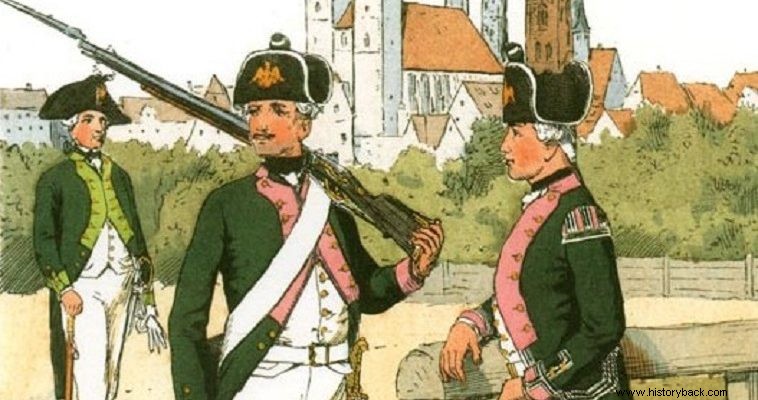
One of the historical myths that have been established for... romantic, ideological reasons concerns the military exploits of the French "democrats" during the French Revolution against the "darkness" of the old regime in other European countries. The legend wants the French "Avracotes", reinforced with regular soldiers of the once Bourbon army, to charge in phalanxes to victory, covered by thousands of acrobats, against opponents moving slowly in rigid formations them.
Of course, all this is not true, except in part, especially with regard to the Prussian army, which had acrobolists and was highly trained. There were other causes of the French predominance. It should be noted that the French "democrats" declared war on almost all of Europe in 1792, the so-called War of the First Coalition.
In the fall of 1793, the French Army of the Moselle had invaded Germany, specifically the Palatinate region. The French army was commanded by the famous general Louis Lazare Aux. The French army was divided into three divisions. Os with the largest division (25,000 men) moved towards Biezingen, a small settlement – then – in the present-day state of Baden-Württemberg, in the Black Forest.
But the route was guarded by a Prussian force of only 7,000 men under General Friedrich Adolf von Kalkrut , an experienced soldier who had joined the Prussian army at the age of just 15 and had seen action in the Seven Years' War. The Prussian general exploited the terrain as best he could. The Prussian center took up position on the Hillsider Heights, its right flank on the east bank of the Bliese River and its left in the Hillsider Forest. However, the French prevailed 4:1.
On November 17, 1793 the French found themselves opposite the Prussian force and attacked. At first the French artillery opened a furious fire against the Prussian center. At the same time a French battalion crossed the Bliese River at Blieskastel with the intention of outflanking the Prussian right. But the Prussians prevailed and pursued the French. At the same time General Lobar moved with his division against the Prussian left.
Lobar's men moved through the Hillsider Forest in order to outflank the Prussian left flank. However, the Prussians, drawn up in the classic formation of the line of three yokes, awaited the French phalanxes and reaped them with a powerful rush. Immediately after the battle, the Prussians rushed out with their lances – in line formation – and forced the French to flee in disgrace, even capturing the wounded general Antoine de Sagn Lobard.
In a new attempt to turn the tideOs sent 3,000 of his cavalry towards the village of Wolfersheim with a view to splitting and cutting the Prussian line in half. Twice the Prussians repulsed the French attacks. A third French attack succeeded in breaking the Prussian lines, but the Prussians regrouped and – in line formation, neither phalanx nor square – drove the French back with heavy musket and rifle fire – wielded by their elite sharpshooters, the Hunters, but also the snipers of the companies of the common infantry battalions – and with their bayonets they put them to flight.
The French launched another final, as it turned out, equally unsuccessful attack against the Prussian right flank again. After the new failure, Os retreated with a total loss of 1,000 men (dead, wounded, captured). The Prussians had only 160 dead and wounded. Despite his victory, however, Kalkrut knew that he could not hold out indefinitely against the French superiority and retreated to Kaiserslauten where on November 28 they were to defeat the French again.
The Battle of Biezingen showed that "linear" tactics were far from bankrupt, after all. After all, the British army fought using linear tactics against the French and lost very few battles, winning most of them.

